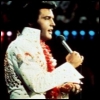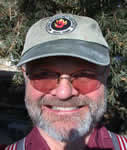My fix for rainout (condensation) in Swift LT nasal pillow
viewtopic.php?f=1&t=34883&st=0&sk=t&sd=a
Stormy condtions ahead: My little DIY heater
viewtopic.php?f=1&t=36287&p=313613#p315704
One was specifically for reducing the back strap from slipping and stabilizing the pillow.
viewtopic.php?f=1&t=35274&p=302473#p302473
Recently I experimented with a small change to the above strap [Please read that thread first], and the results were way over my expectation! Now the cushion does not slip at all from the nostrils; even when I turn from side to side pulling the hose with the mask, while the hose is routed under the covers. For the first time, I have starting turning in sleep without being aware of holding/guiding the cpap hose!
What I did was a change to the way the stabilizing strap in the above post, was attached at the front (face). In the previous one, the added elastic straps' sole role was to prevent the built in back strap of the head gear of Swift LT from slipping up.

The strap was closed in on the face side, as a chin strap, with the beige chin pad, and was not connected to the headgear at all in the front.
In the new method, the straps are attached on the front to the part of the headgear close to the nasal cushion holder.

A small piece of Velcro with sticky glue on one side is attached to the elbow area of the headgear plastic on each side. I found that the glue eventually comes off. So added two staples each (wire ends outside) to firmly hold the Velcro pieces in place on to the plastic.
Now the chin strap instead of closing on each other in front, its ends are attached to each of these new Velcros on the sides. Note that these elastic straps are not at all stretched under pressure normally, they just stay there. They prevent the nasal pillows from lifting away from your nose when you move your head or turn around in bed. Remember that the Swift LT with its double walled pillow not sealed on to the nostrils NOT BY THE HEADGEAR PRESSURE, but by the air expanding the outer wall against the inside of the nostril. It turns out, if you try to keep the pads tight against the nose, the resulting seal is less effective, and of course this could lead to pain.











